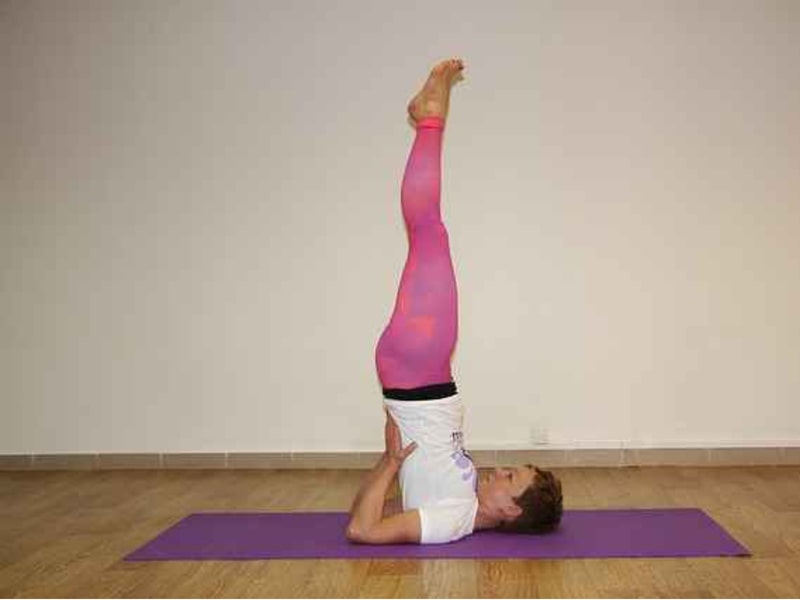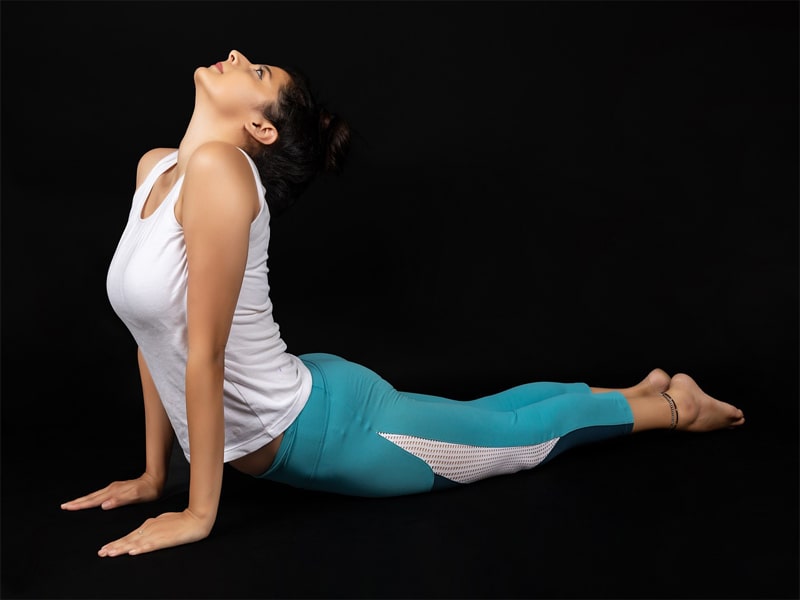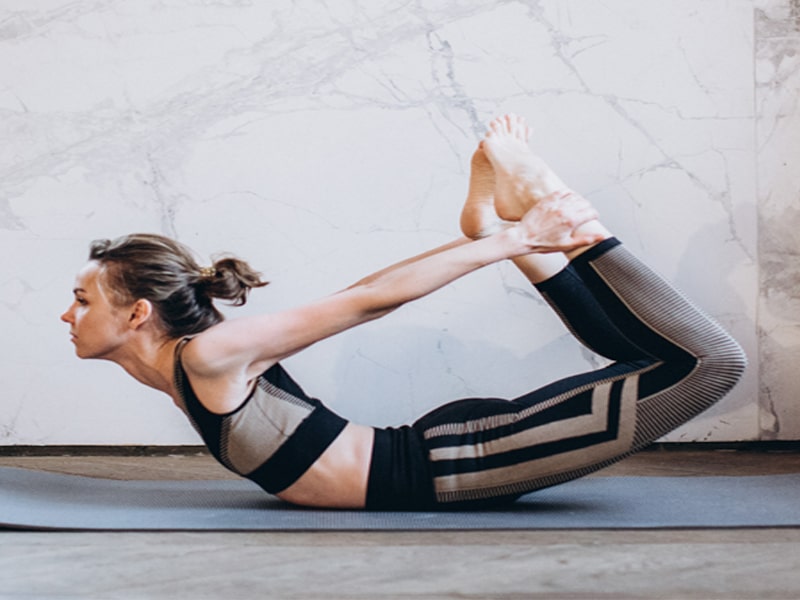Introduction
Yoga is an ancient practice that originated in India over 5000 years ago. It is a holistic approach to health and wellness, encompassing physical, mental, and spiritual well-being. One of the most popular and widely recognized asanas (yoga poses) is the Sarvanga Asana, also known as the Shoulder Stand Pose. In this blog post, we will explore the definition, history, and benefits of the Sarvanga Asana, as well as the steps to perform it, health benefits, and precautions to take while practicing.
Definition of Sarvanga Asana
Sarvanga means “all parts” in Sanskrit, and Asana means “posture” or “pose.” As the name suggests, the Sarvanga Asana involves the use of all parts of the body and is considered one of the most important poses in yoga.
Suggested Article :- Shava Asana – A Complete Guide
Brief History and Origin of the Asana
The Sarvanga Asana has been practiced for thousands of years and is mentioned in several ancient yoga texts, including the Hatha Yoga Pradipika. It is considered a classic yoga pose that helps to promote overall health and well-being. The Shoulder Stand Pose is also known as the “Queen of Asanas” due to its numerous health benefits and the positive impact it has on the body and mind.
Benefits of Practicing Sarvanga Asana
The Sarvanga Asana has many physical and mental health benefits, including improved flexibility and balance, increased blood circulation, strengthened muscles, reduced stress and anxiety, and enhanced respiratory function. It is also believed to promote longevity and improve overall well-being.
Also Read :- 4 Best Branded Yoga Straps in India
Steps to Perform Sarvanga Asana
1. Preparatory Poses
Before attempting the Sarvanga Asana, it is recommended to warm up the body with some preparatory poses, such as the Downward Dog Pose, the Plank Pose, and the Cobra Pose. These poses will help to prepare the body for the Shoulder Stand Pose and reduce the risk of injury.
2. How to Get into the Asana
-
Lie down on your back with your arms by your side and your legs together.
-
Raise your legs towards the ceiling and place your hands under your lower back for support.
-
Slowly lift your hips and lower back off the ground and raise your legs towards the ceiling.
-
Place your hands on your lower back for support, and bring your shoulders and head towards the ground.
-
Slowly raise your legs towards the ceiling, keeping them straight, until your body is in an inverted “L” shape.
-
Keep your neck relaxed and your eyes closed.
-
Hold the pose for a few breaths, and then slowly lower your legs and return to the starting position.
3. Common Mistakes to Avoid
-
Arching the back – It is important to keep the spine straight and not to arch the back while performing the Shoulder Stand Pose.
-
Lifting the legs too quickly – It is important to raise the legs slowly and with control to avoid injury.
-
Holding the pose for too long – Beginners should not hold the pose for too long, as it can be strenuous on the neck and shoulders.
4. Modifications and Variations
-
For individuals with neck or shoulder injuries, it is recommended to place a folded blanket under the shoulders for support.
-
For individuals with lower back pain, it is recommended to perform the supported version of the Shoulder Stand Pose, where the legs are supported by a wall or a chair.
-
For individuals looking for a more advanced version of the Sarvanga Asana, they can try the Plow Pose, where they bring their feet to the floor behind their head while maintaining the inverted “L” shape.
Health Benefits of Sarvanga Asana
1. Improves Flexibility and Balance
The Shoulder Stand Pose requires the use of multiple muscle groups, including the core, legs, arms, and neck. Practicing the Sarvanga Asana regularly can improve overall flexibility and balance, helping to increase stability and coordination.
2. Boosts Blood Circulation
The inverted position of the Sarvanga Asana increases blood flow to the head, neck, and upper body, promoting healthy blood circulation and reducing the risk of cardiovascular disease.
3. Strengthens the Muscles
The Sarvanga Asana requires the use of several muscle groups, including the core, legs, arms, and neck. Regular practice of this pose can help to strengthen these muscle groups and improve overall physical fitness.
4. Reduces Stress and Anxiety
The inverted position of the Sarvanga Asana is believed to calm the mind and reduce stress and anxiety. It can help to improve mood and promote feelings of relaxation and well-being.
5. Enhances Respiratory System
The Sarvanga Asana can help to improve respiratory function by increasing the flow of oxygen to the lungs and promoting deep breathing. This can help to reduce the risk of respiratory problems and improve overall lung health.
Also Read :- 4 Best Branded Yoga Wall Rope in Indian Market
Precautions and Contraindications
1. Medical Conditions to Consider Before Practicing Sarvanga Asana
Before practicing the Sarvanga Asana, it is important to consider any medical conditions that may affect your ability to perform the pose safely. Individuals with neck, shoulder, or back injuries, high blood pressure, or glaucoma should avoid this pose. Women who are pregnant or menstruating should also avoid the Shoulder Stand Pose.
2. Precautions to Take While Practicing the Asana
-
Keep the neck relaxed and avoid straining the neck muscles.
-
Keep the legs straight and avoid bending the knees.
-
Avoid holding the pose for too long, especially for beginners.
3. How to Modify the Asana for Specific Health Conditions
For individuals with neck or shoulder injuries, it is recommended to place a folded blanket under the shoulders for support. For individuals with lower back pain, it is recommended to perform the supported version of the Shoulder Stand Pose, where the legs are supported by a wall or a chair.
Also Read :- 6 Best Special Yoga Chairs Online
Conclusion
In conclusion, the Sarvanga Asana, also known as the Shoulder Stand Pose, is a classic yoga pose with numerous health benefits. Regular practice of this pose can improve flexibility and balance, boost blood circulation, strengthen the muscles, reduce stress and anxiety, and enhance respiratory function. It is important to take precautions and consider any medical conditions before practicing the Sarvanga Asana and to listen to your body and modify the pose as needed. We hope this guide has provided you with valuable information and encouragement to incorporate the Sarvanga Asana into your daily yoga practice.



